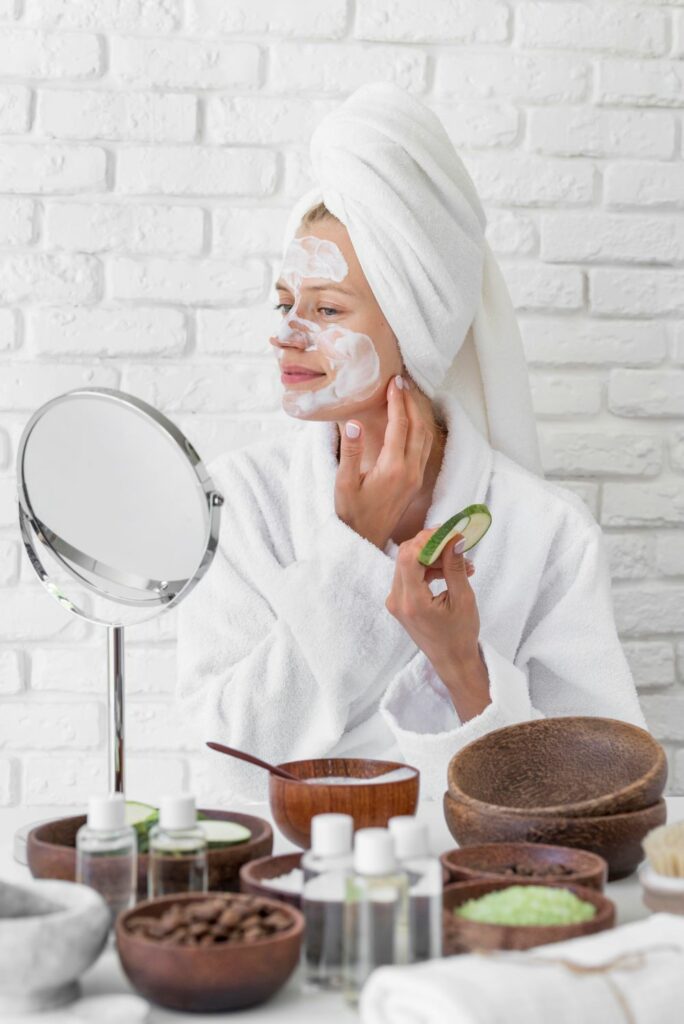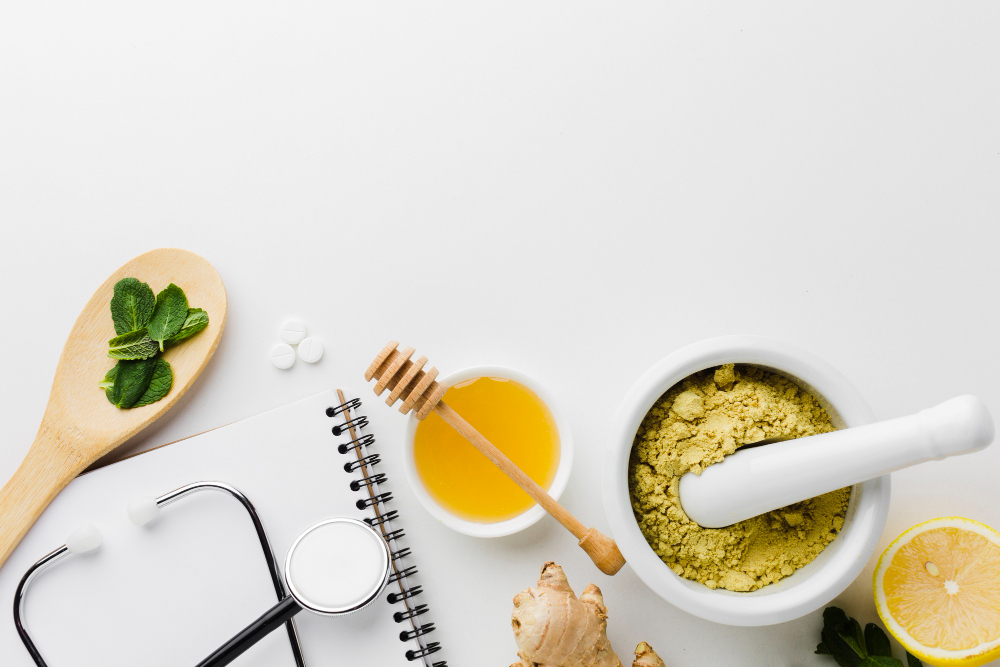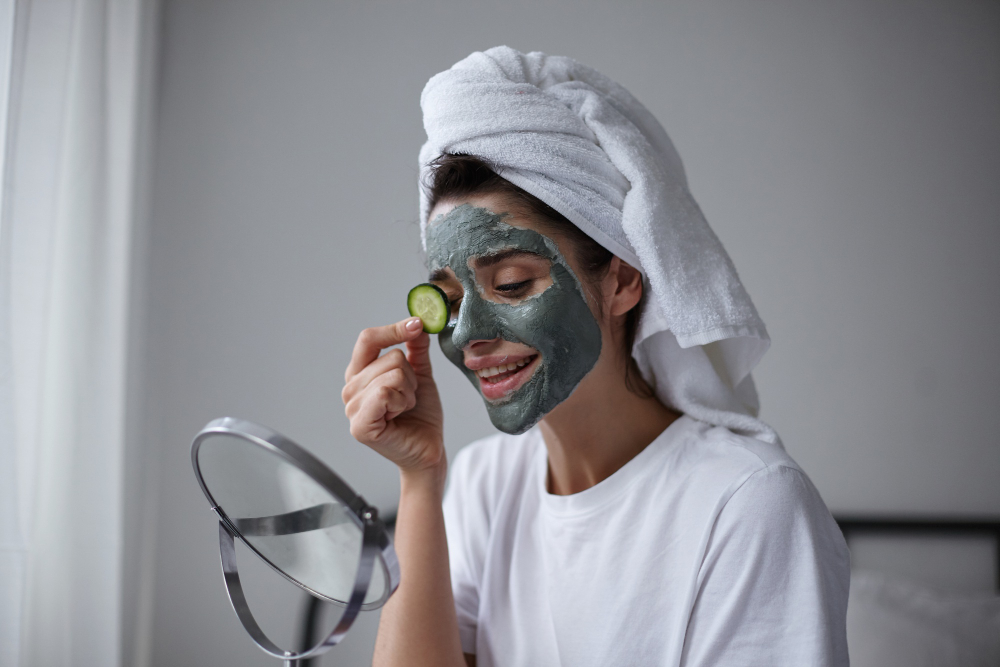
Feeling motivated to attempt an ayurvedic skin care and facial cleanse at home? I’m here to simplify the process by outlining the straightforward steps and pinpointing some top-notch products for your convenience!
Opting for natural ingredients or entirely natural products is highly recommended for your routine skincare regimen, as they deliver optimal outcomes without stripping your skin of its inherent moisture. When it comes to your regular skincare routine like a facial cleanse, it’s advisable to avoid using products containing harsh chemicals.
Utilizing chemical-free cosmetics, creams, and personal care items is vital due to the diverse hazards they can pose to both human health and the environment. Certain chemicals have been associated with potential risks, and here are a few of the hazards linked to chemicals present in cosmetic creams:
Skin Irritation and Sensitization
Certain chemicals, including specific scents, additives, and pigments, have the potential to induce skin irritation, inflammation, itchiness, or allergic responses in individuals. Continued use of items containing these substances could result in persistent skin issues.
Hormone Disruption
Chemicals in cosmetics like phthalates, parabens, and triclosan, have been identified as endocrine disruptors. These chemicals can interfere with the body’s hormone system, potentially leading to developmental and reproductive issues, as well as increased risk of certain cancers.
Carcinogenic Risks
Some cosmetic ingredients, such as formaldehyde-releasing preservatives and certain coal tar dyes, have been classified as possible or known carcinogens. Prolonged exposure to these substances may increase the risk of cancer.
Neurological Effects
Neurotoxic chemicals like lead and mercury have been found in some cosmetics, particularly in products from less regulated markets. These substances can negatively affect the nervous system and cognitive function, especially with prolonged exposure.
Environmental Impact
Chemicals from cosmetics can enter the environment through wastewater and other means, contributing to pollution in water bodies and soil. This can harm aquatic life and disrupt ecosystems.
Bioaccumulation
Some chemicals used in cosmetics can accumulate in the body over time. For instance, heavy metals like mercury can build up in tissues, potentially causing long-term health issues.
Mislabeling and lack of regulation
In some cases, cosmetics may contain undisclosed or inaccurately labeled ingredients. Additionally, the regulation of cosmetics can vary widely between countries, and not all products undergo thorough safety testing before being marketed.
Microplastics and nanoparticules
Some cosmetics contain microplastics and nanoparticles which are tiny particles that can have negative effects on the environment when they enter water bodies and are ingested by marine life. These particles can also potentially enter the human body through the use of cosmetic products.
To mitigate these risks, it’s important to be an informed consumer. You can read ingredient labels, choose products from reputable brands, look for certifications such as “cruelty-free” or “organic,” and consider using natural or organic products that are less likely to contain potentially harmful chemicals. Or simply use total natural products from nature which are completely efficient for skin scare without any side effect.
We know how difficult it is to stick with complex regimes, so we’ve made this one really simple to follow.
Let’s start with the first basic step.
Cleansing

Begin by inspecting your face for any lingering makeup. Honey or oils like coconut, jojoba, sunflower, almond, or argan can be employed to gently eliminate any residual makeup. Utilizing an all-natural makeup remover is especially beneficial for sensitive skin and provides hydration to parched skin.
Commence by applying the makeup remover to your skin and delicately massaging it using circular motions. Pay special attention to delicate areas such as eyelids, under the eyes, and areas with tenacious makeup like the lips. Employ a moistened tissue, cotton pad, or washcloth for hassle-free cleanup.
For the subsequent cleansing phase, clear away the oil residue with a dry cotton pad and gently pat the skin dry using a soft towel. It’s advisable to avoid using hot water during this process as it could potentially lead to skin dryness.
This approach to cleansing is known as double cleansing. Given that a cleanser alone might not be sufficient to eliminate all traces of dirt and makeup, incorporating an oil-based makeup remover aids in effectively eliminating any remaining remnants.
Honey is also a natural cleanser. If you’ve oily skin, you can apply lemon and honey to your face for cleansing and then wash it off after 5 minutes.
Steaming
After completing your facial cleansing, utilize either a facial steamer or a vessel filled with boiling water to steam your face. Enhance the experience by adding a few drops of essential oil to the water, which imparts a moisturizing effect.
During the steaming process, ensure your face is positioned a few inches away from the steaming bowl or apparatus, and envelop your head with a towel. Engage in steaming for a duration that is comfortable for your skin, ideally no more than 5 minutes. Subsequently, delicately blot your face using a facial tissue.
This phase is particularly advantageous for individuals with oily skin. Steaming not only assists in the elimination of toxins but also intensifies the cleansing of your face. Additionally, it aids in the extraction of blackheads and whiteheads. Following the steaming session, employ a blackhead remover to cautiously address persistent blackheads.
Post-steaming, you can apply ice cubes to your face, employing circular motions. This technique effectively minimizes pore size and restores the skin’s temperature to its regular state.
Scrubbing
Are you aware of the reason behind your skin’s lackluster appearance?
It’s due to the accumulation of deceased skin cells over time. This leads us to the third phase of the facial clean-up: exfoliation.
Exfoliating your skin proves to be an effective method for eliminating these lifeless skin cells, while also priming your skin to better absorb subsequent skincare products. Opt for a gentle natural scrub that treats your skin kindly. Employ this scrub to gently exfoliate your face for approximately 3 minutes. Exercise caution to avoid applying excessive pressure, as it may result in skin damage. Allow the scrub to remain on your skin for about 3 minutes before rinsing it off.
Unlike chemical scrubs containing plastic microbeads, opt for a natural concoction composed of organic components that naturally exfoliate the skin. For instance, you can combine equal portions of brown sugar and lemon to concoct a homemade scrub, offering a natural exfoliating effect to your skin. This blend aids in lifting away impurities and pollutants, contributing to a radiant complexion.
Applying Face Pack

The concept of applying a facial mask and unwinding is truly comforting! However, a facial mask offers benefits beyond just soothing your nerves.
Regardless of your skin type, using a hydrating facial mask renders your skin supple and enhances its complexion. Nevertheless, selecting an appropriate facial mask tailored to your skin type is crucial.
Smoothly apply the mask across your face and indulge in relaxation. Allow it to remain until it dries, typically within a span of twenty to thirty minutes. Once the mask has dried, cleanse it off using cold water and gently pat your skin dry.
If you’ve oily or combination skin, you’ll benefit from:
Ingredients:
- 2 tablespoons of bentonite clay
- 1 tablespoon of apple cider vinegar (or water for sensitive skin)
- 1 teaspoon of honey (raw and unprocessed)
Optional: a few drops of tea tree oil (for its antibacterial properties)
If you’ve dry skin, then you can prepare a face pack using banana, honey, and yogurt. These natural ingredients have cleansing and tightening effects on the skin.
- 2 tablespoons of mashed ripe banana
- 1 tablespoon of plain yogurt
- 1 teaspoon of honey (raw and unprocessed)
- 1 teaspoon of olive oil or almond oil
If you’ve acne issues, then use special anti-acne face packs that have special ingredients that help in removing acne and scars.
- 1 tablespoon of mashed ripe papaya
- 1 teaspoon of turmeric powder
- 1 teaspoon of honey (raw and unprocessed)
- 1 teaspoon of aloe vera gel
- A pinch of cinnamon powder
Toning
Toning constitutes another crucial phase of facial cleansing. It imparts a refreshing sensation to the skin, while also closing the pores and ensuring proper hydration. Opt for a gentle and chemical-free toner that aligns with your specific skin type, or alternatively, you can utilize cucumber juice, a straightforward homemade toner renowned for its cooling effects during the summer and its ability to maintain the skin’s pH balance.
Moisturizing
Now, let’s transition to the ultimate and most soothing phase of facial cleansing: moisturization.
Applying moisturizer serves the purpose of maintaining facial hydration and targeting individual skin concerns. Apply a nurturing product to both your face and neck, such as natural moisturizers like coconut milk, sesame oil, olive oil, and aloe vera. These elements possess inherent moisturizing properties.
You can opt to apply these natural moisturizers directly to your face for hydration or choose creams formulated with these natural oils.
Conclusion

You will get many benefits of a face cleanup because regular face cleanup keeps your skin free of excess dirt and impurities.
It ensures that your skin remains refreshed and rejuvenated and keeps pores unclogged and clean which helps in reducing breakouts and other skin issues.
Engaging in a facial cleanse twice a week maintains skin hydration and averts dryness-related skin problems like flakiness and itching. Moreover, it imparts a luminous quality to your skin while diminishing tanning and pigmentation concerns. All this is also related to lifestyle and healthy eating. What you eat and how you live is reflected on the outside.
References
The Role of Skin Care as an Integral Component in the Management of Acne Vulgaris
Skin Cleansing without or with Compromise: Soaps and Syndets
